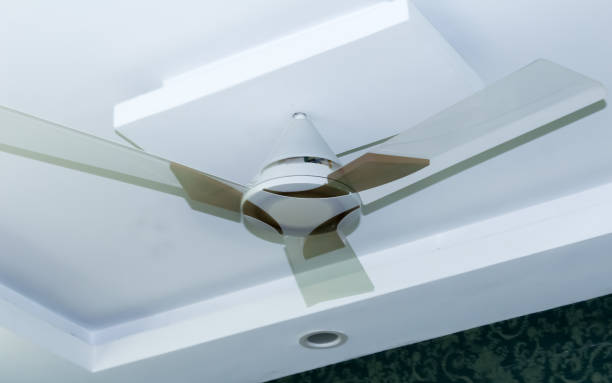Many overlook a ceiling fan until it stops working. Unfortunately, like all appliances, fans do not last forever. Recognizing when a ceiling fan needs replacement can save energy and money and even prevent future accidents. This article explores the four most common signs that indicate your ceiling fan might need to be replaced.
Unusual Noises
Ceiling fans are designed to run quietly, providing comfort without disturbance. If your fan starts producing strange noises, like buzzing, grinding, or squeaking, it’s a red signal. A properly functioning fan should operate almost silently, with only the soft whoosh of air being audible.
Absurd noises often occur when internal components become loose or when bearings begin to wear out. If the noises persist despite tightening screws or cleaning the fan, the fan may need a full replacement. Using a noisy fan can also increase wear on other parts, leading to bigger problems later.
Wobbling or Shaking
When a ceiling fan wobbles or shakes, it indicates that something is off-balance. These fans rely on a precise distribution of weight for smooth operation. If the blades are uneven or one has become bent, it can create a wobbling effect that disrupts comfort and causes strain on the fan’s motor.
Many people try adjusting the blades or tightening the mounting to address wobbling. However, if this doesn’t resolve the issue or if the fan continues to shake, it might be time for a replacement. Using a wobbly fan can lead to further damage, including broken blades or even detachment from the ceiling.
Poor Air Circulation
Overhead fans are primarily used to circulate air and keep a room comfortable. If a fan no longer cools the room effectively or seems to produce weak airflow, it could be a sign of a failing motor or internal malfunction. Often, this happens as the fan’s motor begins to deteriorate over time.
In such cases, the issue may not be fixable through simple maintenance. A weak breeze or a fan that no longer provides comfort can indicate that the motor is no longer functioning efficiently. When air circulation is compromised, it’s time to consider investing in a new ceiling fan to restore proper airflow.
Light Bulb Flickering
Many ceiling room fans have light fixtures, and if those lights begin flickering or fail to turn on, it might not just be an electrical issue. A flickering light is often tied to faulty wiring or an aging motor. Even if the fan is functioning well enough in other respects, this is a warning sign that the unit’s electrical components may be failing.
When flickering lights or malfunctioning fixtures persist, it’s best to inspect the entire fan. If electrical components are starting to deteriorate, it’s a safety hazard to continue using the fan. Replacing the fan might be the safest and most efficient way to restore proper function.
Where Can You Buy a Reliable Ceiling Fan?
When it’s time to replace your ceiling fan, finding a reliable source for purchasing a new one is crucial. With so many options available, choosing the right fan can be overwhelming. It’s important to select a store that offers different fans to suit different needs, from size and design to functionality and energy efficiency.
Look for retailers with a solid reputation for quality products and customer service. Shopping at a trusted store ensures you get a well-made fan and the support needed for installation or maintenance. Whether you need a modern style or something more traditional, make sure to choose a supplier that can offer the perfect fan for your space and budget.
Ceiling fans are essential for maintaining comfort in many homes, but they do not last forever. Replacing a worn-out fan can restore comfort, enhance energy efficiency, and ensure safety. Hence, if a ceiling fan is showing any of these signs, it’s better to replace it via a reliable source.


